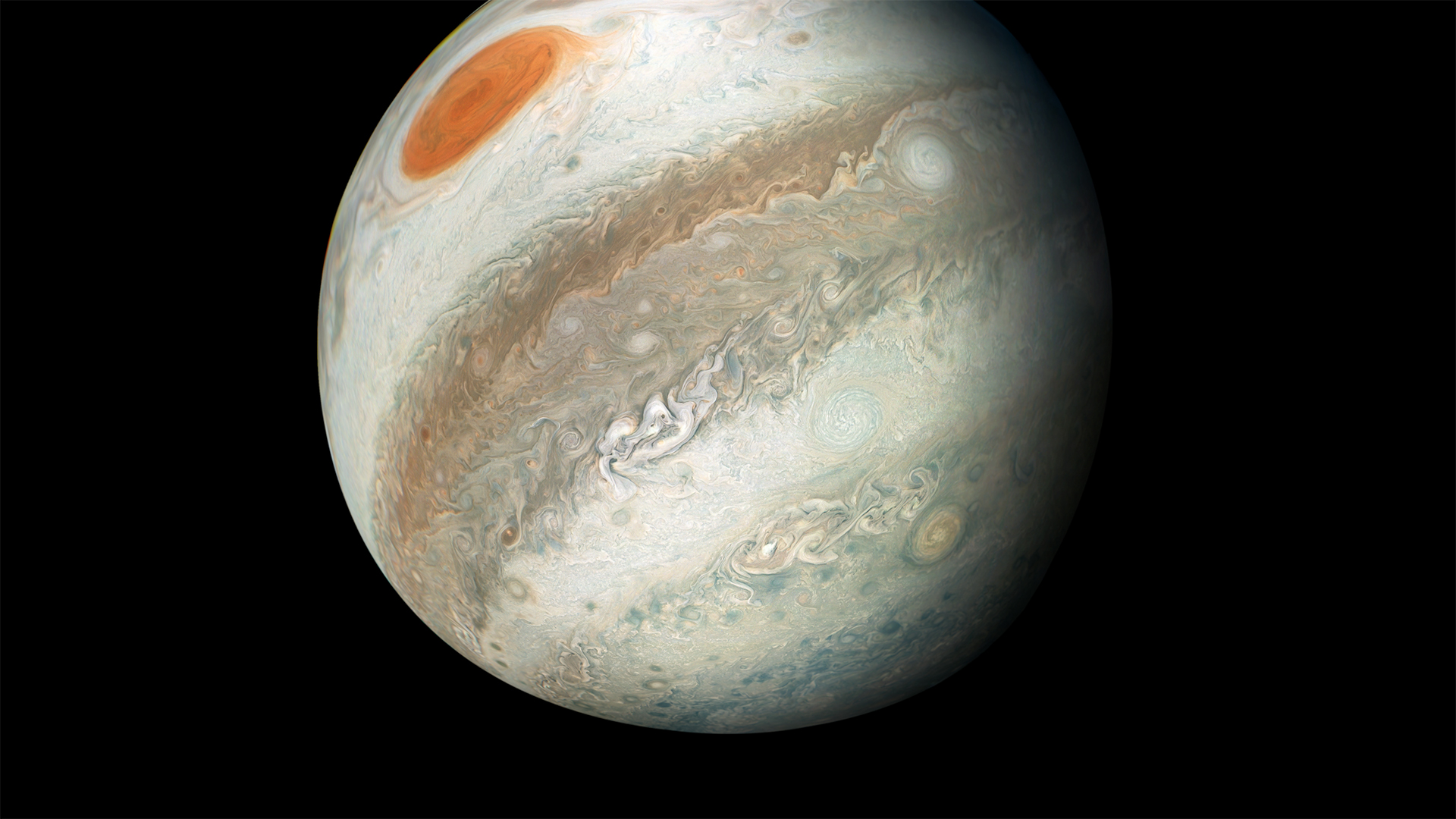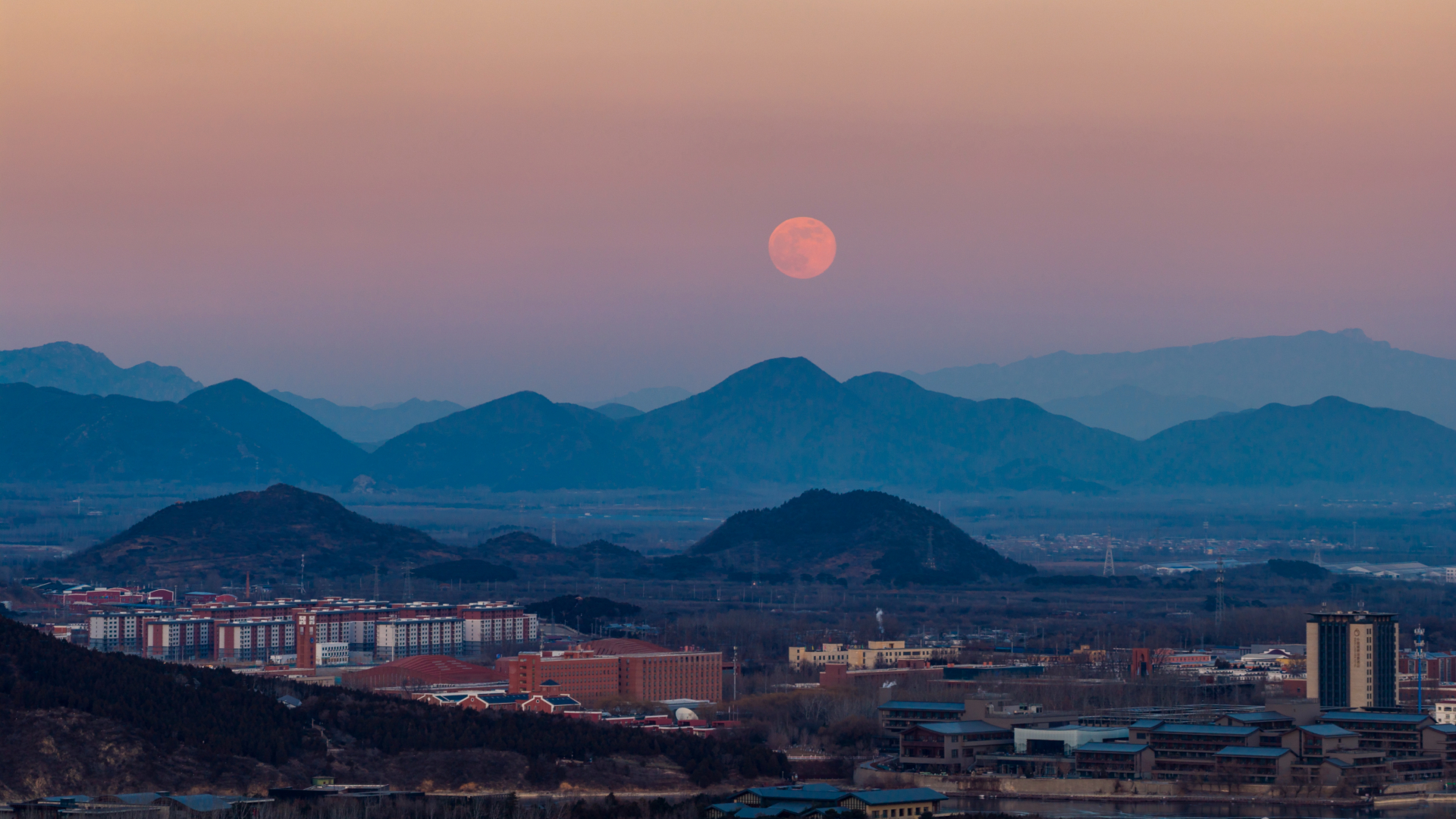Jupiter's Great Red Spot Is Spectacular (and Weird) in This Juno Photo

A gorgeous photo by NASA's Juno spacecraft shows Jupiter as you've probably never seen it before.
"This new perspective of Jupiter from the south makes the Great Red Spot appear as though it is in northern territory," NASA officials wrote today (May 21) in a description of the image. "This view is unique to Juno and demonstrates how different our view is when we step off the Earth and experience the true nature of our three-dimensional universe."
The famous Great Red Spot — a howling hurricane that's bigger than the entire Earth (but has shrunk considerably over the past century-plus) — is actually centered about 22 degrees south of Jupiter's equator. [See more amazing photos of Jupiter's Great Spot!]
The newly released photo is a composite of multiple images snapped by Juno's JunoCam on April 1, during the spacecraft's most recent close flyby of the solar system's largest planet. Juno took the constituent photos from a distance of 10,768 miles (17,329 kilometers) to 42,849 miles (68,959 km) above Jupiter's cloud tops, NASA officials said.
Citizen scientists Gerald Eichstädt and Seán Doran then processed the raw JunoCam data into the finished photo that was released today. (Anyone can do such processing work; to learn more, go to the JunoCam site.)
The $1.1 billion Juno mission launched in August 2011 and arrived at Jupiter in July 2016. The probe orbits on a highly elliptical path, zooming above the gas giant's poles once every 53 days.
The solar-powered Juno makes most of its scientific observations during these close approaches, gathering information about Jupiter's composition, structure and gravitational and magnetic fields. The probe's data should help researchers better understand how Jupiter, and by extension the solar system, formed and evolved, mission team members have said.
Breaking space news, the latest updates on rocket launches, skywatching events and more!
The April 1 encounter was Juno's 12th science flyby of Jupiter. The 13th will occur on Thursday (May 24).
Follow Mike Wall on Twitter @michaeldwall and Google+. Follow us @Spacedotcom, Facebook or Google+. Originally published on Space.com.

Michael Wall is a Senior Space Writer with Space.com and joined the team in 2010. He primarily covers exoplanets, spaceflight and military space, but has been known to dabble in the space art beat. His book about the search for alien life, "Out There," was published on Nov. 13, 2018. Before becoming a science writer, Michael worked as a herpetologist and wildlife biologist. He has a Ph.D. in evolutionary biology from the University of Sydney, Australia, a bachelor's degree from the University of Arizona, and a graduate certificate in science writing from the University of California, Santa Cruz. To find out what his latest project is, you can follow Michael on Twitter.
